|
DAVINCI - MONA LISA - PAGE 3
|
Antediluvian Period |
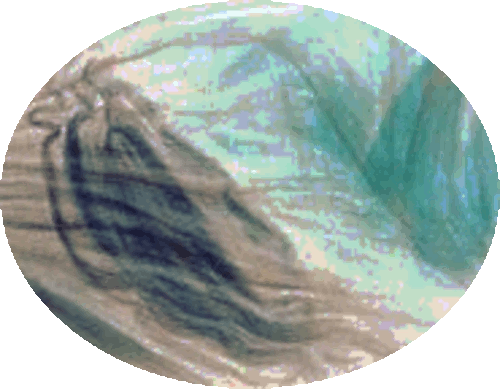
Cave dwellers |
- In the Christian Bible, Hebrew
Torah and Islamic Quran, the antediluvian period was the time
between the fall of man and the Genesis flood.
- The
Sumerian flood myth was a predecessor to the biblical flood
story, but they are the same story.
- Like the Abrahamic
cultures, the Sumerians divided time between pre-flood era,
when gods walked the earth, and post-flood eras, when gods
separated from humans who were no longer immortal.
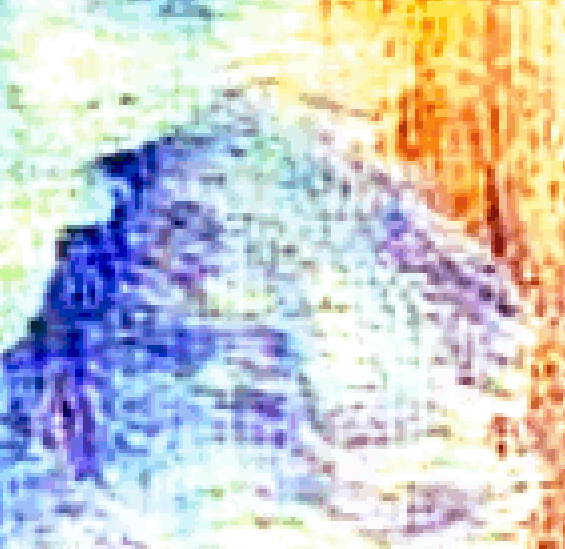
Blue-eyed
Neanderthal |
- Early beings on earth were the
Neanderthals, among others; there were three different hominin groups
up to 40,000 years ago.
- Wickedness on earth was rampant with
incest and interbreeding.
- The Antideluvian period lasted
1,656 years with the fall of man occurring between 4004 BC to the Flood at 2348 BC.
When human beings began to increase in number on the earth and daughters were born to them,
the sons of God saw that the daughters of humans were beautiful, and they married any of them they chose.
(Genesis 6:1-2)
|

Gibborim goldminer |
- There were Gibborim (giants) in the
earth in those days as well as Nephilim.
- Genesis calls them "mighty men which were of old, men of renown."
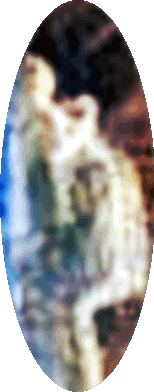
Family members |
- This period was filled with biblical
stories such as Adam and Eve and Cain and Abel.
- All humans
are related to one man and one woman: “Y-Chromosome Adam” and “Mitochondrial Eve.”
|
Egyptian Pantheon |

Atum, god of the sun |
- The Egyptian Enneads, children of
Atum, god of the sun, are the nine gods of Egypt; Atum, Shu,
Tefnut, Geb, Nut, Osiris, Isis, Seth and Nephthys.
-
Egyptians were polytheistic and honored many gods and
goddesses in their spiritual pantheon.
- They were cosmic
entities known as the Great Ennead of Heliopolis 'City of the
Sun' during the Old Kingdom circa 2649-2130 BCE and the
Ptolemaic Period from 332-30 BCE.
- The Enneads ruled over
Egypt and are the basis of our understanding of the myth of
creation.
|
|
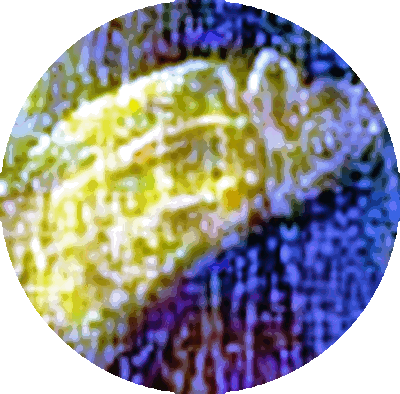
Scarab beetle |
- The nine deities were from different ages and all ruled
one after the other, each of them for thousands of years.
-
The first was Atum and you count Adam's nine generations down
through the antidiluvian kings (patriarchs) also known as
archons, the seventh was Enoch, followed by Methuselah and
Lamach, nine total.
- Atum (Adam) is sometimes Ra,
sometimes a woman (Barbēlō), sometimes a man, a divine
emanation, basically genderless, the eternal virgin, basically
alone by herself but contains all the forms/patterns to create
the universe and that's the Holy Spirit.
- They lived in a different world than
us, that was not in this world, the world that then was and
was destroyed and we're waiting for a new world, a new heaven.
- The physical universe is only half the universe, the
invisible universe can't be seen.
- Book of
Revelations tells us that Jesus is the Almighty, the father is
in him, and he is in the father.
|
|
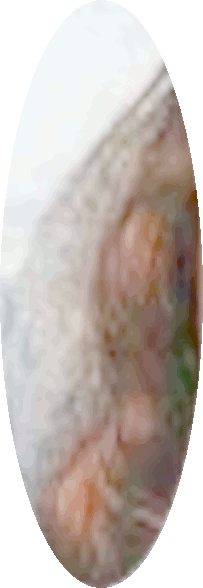
Veiled language |
- Sumerian Enlil is called Satam does not mean Satan which comes from
Set (Seth); the Greeks took the names of the Egyptian gods and
added their own syntax.
- So why none of the scholars today
seem to understand that satam and satan aren't the same word
because they both end with 'an' which is syntax added and have
nothing to do with the meaning of the word.
- BTW,
Palestine means Palace of Satan if you want to point fingers,
the current home to Israel.
- Set murdered his brother Osiris, who was one of the greatest
Egyptian deities.
- Amen at the end of your prayers, is
saying 'A moon' (or son of) just as saying Amun Ra is saying,
'A moon of ray' (the son of the sun) unlike what many
historians claim.
|
|
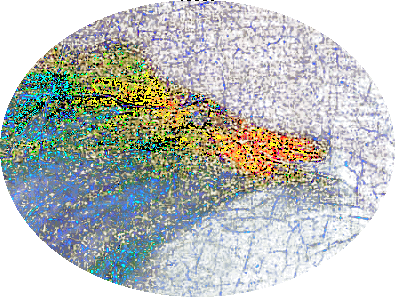
Noah goldfish |
- Noah's ark wasn't a boat, it was a creation, and
inside that creation were all the animalistic natures that had
to go down through the water and come out and be raised up
through Pisces and Aquarius and raised up on the horizon,
which is Horus, as Andromeda, andros, human, Cetus, riding the
beast.
- Perceus comes to
save her at the Spring Equinox.
- Sun, Ra, Atum (Adam) why
so many names for our sun? Different words to describe rays
from the sun (shine) radiation.
- Ra backwards is ar (ore,
gold, aura, shines); Jerusalem is uru (ore) and salem (peace);
Uranus is ur (ore) anna (heaven).
|
|
Ancient Sumeria |
|
|

Anu, Divine Heavenly Father |
- Anu (Uranus), sky god, was father of all the gods, he
created man in the first Genesis story and they were perfect
and lived in paradise.
- So why would the Greeks worship
Uranus; because above Anu was Ra, and Ra created the heavens
and the earth.
- The waters and the earth married and had
children.
- But Ra, the sun, came first.
- The Greeks
had Uranus because they were showing you the different
generations, and that there are fathers, above fathers, above
fathers, etc.
- Through the generations, some were Akkadians, some
were Sumerians, some were Mesopotamians and some were
Babylonians, over a period of 400,000 years.
|
|

Heart |
- Above the sky is the sun, and above the sun is light,
and above light no man knows because our Heavenly Father
dwells in unapproachable light.
- The highest mystery was
the wife of Pharoah Joseph, Asenath, which means 'waters' and
she is the 'woman who sits upon many waters' which is
consciousness, and she reigns over all of us.
- Heaven is
in your heart.
|
|
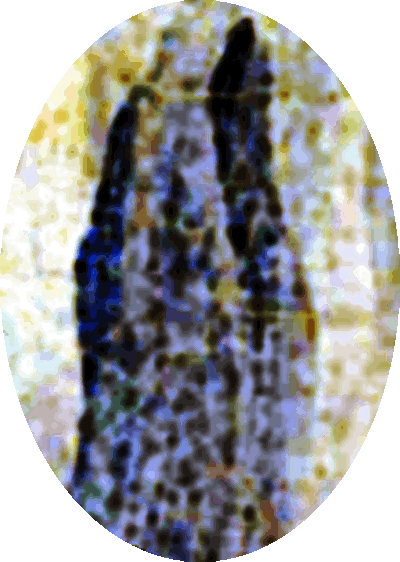
Mesopotamian gods |
- Beneath Anu, Enlil and Enki Ea were two ancient Mesopotamian gods
who had complex relations with each other and the pantheon
they ruled.
- Despite their differences, both were
essential to the functioning of the cosmos understood by the
Mesopotamians.
- Enlil represented the Heavens, Enki
represented the Earth.
- They were supposed to balance each
other; as above, so below, but that never happened.
|
|
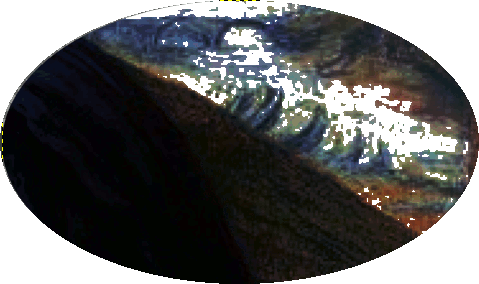
Darkside |
-
Anyone who thinks the 'darkside' is bad needs to wake up and
realize that half of what we operate (live) on in the world is
dark; sex, death, winter, night, etc.
- And we all do need
a little bit of anger and ego to move things along, it's not
all bad or evil.
- But it's just amazing that the creeps
who sold us this version of earth are the most evil, demonic
beings going.
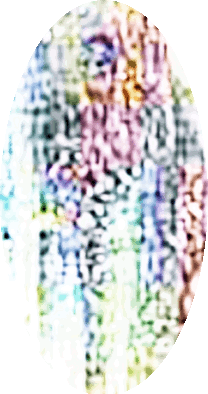
Enki Ea (YHWH) with a smug grin |
- The origins of Enki began in the epic
Enûma Eliš, where he is the son of Tiamat and Abzû, but in
Sumerian mythology, he was the son of Anu, the sky god, father
of the gods, who was
the supreme god of the cosmos, and Nammu, the ancient mother
goddess.
- The Sumerian ‘En’ translates roughly into ‘lord’
and ‘ki’ means ‘earth’ and he was the eyes
and ears of the earth.
- Goat/fish
god, symbol of the Capricorn (Satan) with the element of Earth
and the bottom of the wheel.
Enki is depicted on several Mesopotamian seals with two rivers, the Tigris and Euphrates rivers, flowing over his shoulders. He is shown wearing a long skirt and robes and a horned cap, the mark of divinity. He has a long beard and an eagle is shown to be flying down to sit on his outstretched arm.
(historycooperative.org)
|
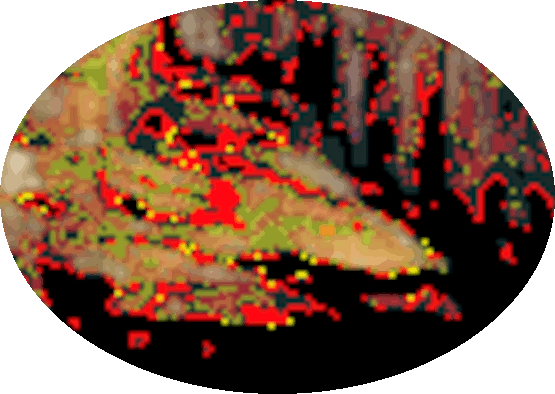
Clay and blood meat suits |
- Enki, mad scientist, and his son Marduk, created man
(meat suits) as slaves from original divine beings on earth
(who didn't have material bodies) because the Sumerian Igīgī were overworked and angry about their workload.
- Ea (E-ah)
is yah, which is Yahweh and there's no vowels (YHWH) and is
Enki.
- Enki Ea (Yahweh), god of Israel and the lower
ego, also known as a trickster, tricked divine beings living on
earth into wearing the meat suits, and is the reason for the second Genesis in
the Bible.
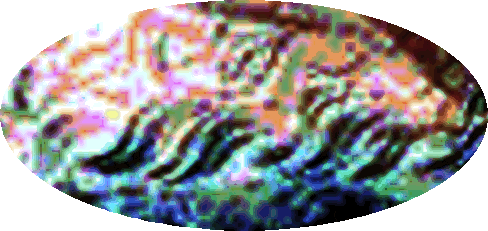
Meat suits formed in lab |
- Enki did not create man, he changed their DNA
(programming) and he cursed the serpent which was the wisest
of all creatures.
- DNA is the serpent where our wisdom is
supposed to come from and where we get our instinctual nature.
- He made man out of dust, the elemental form, death.
-
Enki does not live in Heaven with Anu, the eternal god, he
crawls around on Earth and tricks everyone and created hell.
- And he is not coming back to Earth (pretending he's Enlil)
to save anyone, in true reality, he's waiting to crawl back
out of the depths of the empty Euphrates river (after he's
done destroying it).
- If he tries getting anywhere near
your DNA, run.
-
Enki was granted a lot of power on earth and he abused it.
- Don't let anyone convince you that being trapped in a meat
suit (instead of floating around free as a divine being) is
somehow humanitarian on Enki's part, it's not.
A man loves the meat in his youth that he cannot endure in his age.
(Shakespeare)
|
|
|

Enlil king of the gods |
- Enlil, Heavenly deity, was worshiped as the king of the gods, and was the
Sumerian god of the air and wind.
- Enlil is the
counterpart to the Greek Zeus, with the thunderbolt (karma).
- He was much
more powerful than any of the other gods.
- Enlil was so
sacred, that even the gods feared to look upon him.
- He
was involved in the true creation of Earth and the divine
beings who made it happen were the Elohim, who are the
creators (which Enlil and Enki are only a part of, not the
entirety).
- Plus, Enki tinkered with the DNA after the
Elohim had already created divine beings of perfection and put
them in place.
- He hacked the Elohim's system.
- Enlil
was angry about Enki's DNA scam, which he called humans, and believed
their creation broke sacred cosmic laws.
- It's ludicrous
to think that Enlil modified DNA when it was Enki, assigned to
earthbound realm, was the one running around with muddy hands, while Enlil was up residing in heaven with the Most
High, Anu, the supreme divine being.
There's a divinity that shapes our ends, rough-hew them how we will.
(Shakespeare, Hamlet)
|
|
|
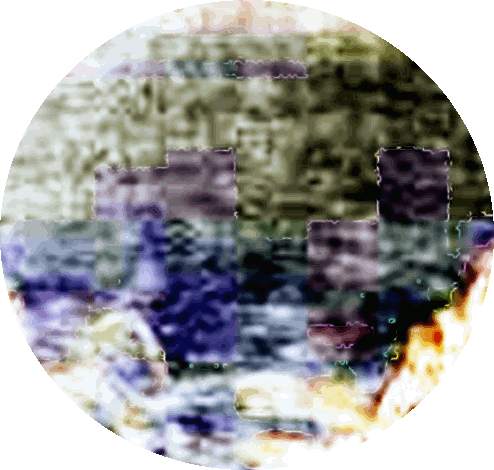
Enki command center |
- The first model that Enki created, giants, had so many problems
they all ended up going mad and became very violent because
they all shared the same brain, and same thoughts.
- Enlil
became increasingly concerned with the pollution and
destruction they caused; they were so big they were extremely
voracious eaters and couldn't be sustained.
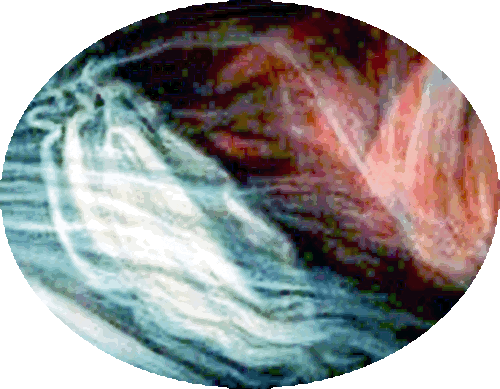
Flood |
- As always, Gaia, balanced everything out and the giants
were destroyed in a flood.
- Sumerian, Mesopotamian or
Akkadian, different spaces, different places.
- And yes,
some here do earn bad karma and it keeps happening over and
over, stop blaming Enlil.
- Enki kept upgrading his
software and created a new model, much smaller than the
original, that still remains stuck on earth today, he created
many abominations along the way.
- Enki's
son, Marduk, took over the programming and gave the humans
many upgrades.
- He also turned off many of their features (DNA)
after Enki started worrying they were becoming too smart.
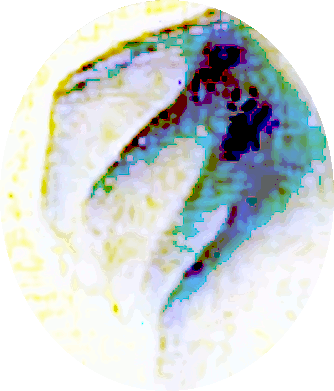
Enki elephant |
- Adam (Adapa), one of Enki's creations, appeared before
Enlil to get eternal life. and Anu and Enlil gave him
instructions to take the sacrament bread and wine, the true
Heavenly covenant.
- But Enki confused Adam (Adapa) and
told him not to take the new covenant, but instead, to take the Old Testament
covenant, the law.
- So Adam (Adapa) was not granted
eternal life because of Enki (who many historians try claiming
is a good guy).
- Enki (Yahweh), also known as the
Demiurge Yaldabaoth, wanted to keep humans trapped on Earth in
meat suits in the lower ego so he could have slaves.
- He's
not Jesus Christ in any way, he's Yahweh.
|
Sumerian Enûma Eliš |

Tiamat the primordial sea |
- Babylonian epic Enûma Eliš (When on High) or The Seven Tablets of Creation, was a creation myth where
Tiamat, time and matter, goes to war against the Babylonian Pantheon which she
helped create.
- Concerns the birth of the universe,
creation of the gods and humans, the same actions that Gaia
and Uranus performed, same thing, the cosmic dance.
- Tiamat, the primordial sea, mated with Abzû (Apsu),
the groundwater, to produce the gods (archons).
- Displays as a female with breasts and a
tail.
- The myth was recorded on
cuneiform tablets from ancient Sumeria and tells the story of
the god Marduk's victory over the forces of chaos and his
establishment of order on earth (law, is that really victory?).
- The tablets contain the
same story as found in the Bible.
She is still often referred to as a monster, though this identification has been credibly challenged. In Enuma Elish, she is clearly portrayed as a mother of monsters but, before this, she is just as clearly portrayed as a mother to all the gods.
(Wikipedia)
|
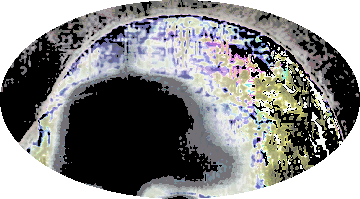
Tiamat Dungeons and Dragons |
- Tiamat, chaos, is best known from Babylonian mythology, 9th century BCE,
however, she she is also present in more ancient Akkadian mythology.
- Mesopotamian deities came before all organized
religions.

Babylonian Pantheon |
- She gave birth to the Babylonian Pantheon,
who were not always benevolent, but she was
not one of them.
- Her story is the same theme as the
Greek Titans and Roman mythology which both came after
Babylon.
|
|
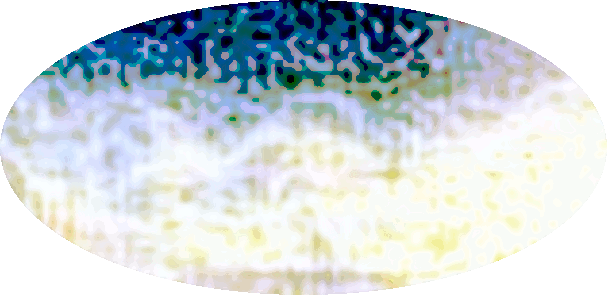
Tiamat and Abzû giving birth |
- Tiamat gives birth to the first generation of deities after
she mingled her salty waters with those of Abzû, her consort.
- Together, they parented her elder children, Lahmu and
Lahamu, the Hairy, who were gatekeepers in Enki's temple in
Eridu.
- Lahmu and Lahamu, the Hairy, were parents of Kishar (earth) and Anshar
(heaven-totality/end).
|
|
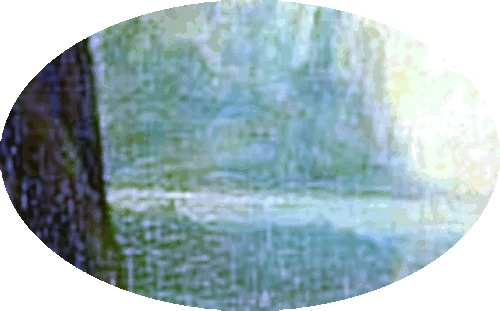
Cosmic abyss |
- Meanwhile, Tiamat and Abzû (Apsu) continued to reproduce and
created a new generation of divine children.
- Their
mixing of waters occurred in the Persian Gulf where fresh
water from the Arabian aquifier mix with salt water from the
sea.

Child of Tiamat and Abzû (Apsu) |
- Abzû, who
was driven to violence by the noise the children made,
threatened to destroy them at the advise of his mentor and
Vizier, Mummu.
- They were so loud Abzû couldn't sleep at
night or work during the day.
- Tiamat was so upset by the
threat, she told her eldest son Enki Ea.
- Unknown to
Tiamat, Enki immediately imprisoned Abzû in a prison
underneath his temple E-Abzu ('temple of Abzu') also known as House of the Subterranean Waters.
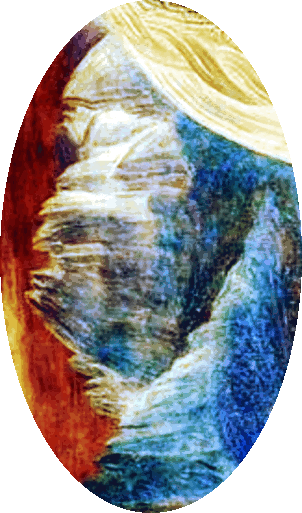
Abzû |
-
Kingu, another son of Tiamat and Abzû, discovered that Enki was
holding Abzû captive and he informed Tiamat.
- Next, Enki Ea
put
Abzû, his father, into deep sleep and murdered him, then took over his kingdom.
- When Tiamat
heard the news, she went to war against her children and gave birth to 11 monsters
(demons) as weapons, to avenge Abzû's death.

Qinqu, unskilled laborer, consort to Tiamat
|
- Tiamat also takes a new consort, Qingu (Kingu), her son, and bestowed on him the Tablet of Destinies
and a breastplate, which represented legitimate divine rulership.
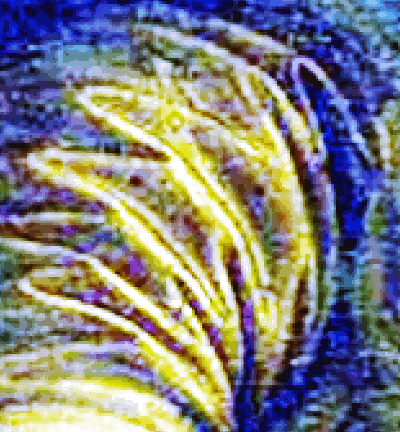
Winged dragons, serpents and snakes |
- The 11 children that Tiamat created were
the archon Reptilian gods (demons); Bašmu ('Venomous Snake'), Ušumgallu ('Great Dragon'), Mušmaḫḫū ('Exalted Serpent'), Mušḫuššu ('Furious Snake'), Laḫmu (the 'Hairy One'), Ugallu (the 'Big Weather-Beast'), Uridimmu ('Mad Lion'), Girtablullû ('Scorpion-Man'), Umū dabrūtu ('Violent Storms'), Kulullû ('Fish-Man'), and Kusarikku ('Bull-Man')
(Wikipedia).
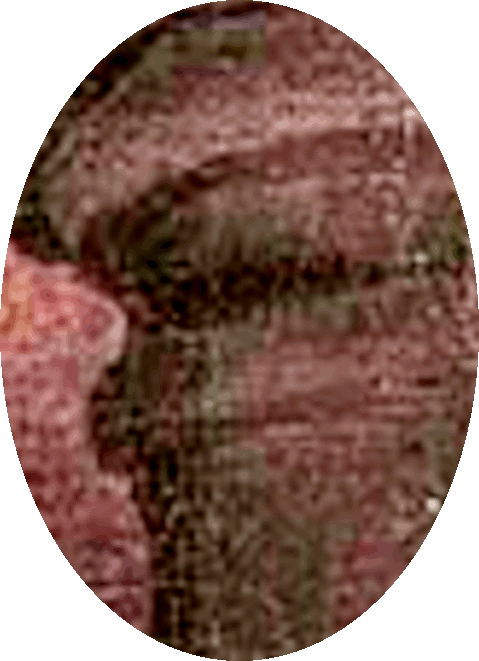
Marduk calf of the sun |
- Marduk was the son of Enki Ea and Damkina (Damgalnunna).
- A king of the gods who was awarded 50 names by Enlil.
- Marduk saw the danger in Tiamat's 11 monsters and feared
what they might do.
|
Tiamat's 11 monsters |

Bašmu
venomous snake constellation |
- Bašmu ('Venomous Snake') took the form of a giant horned
snake with arms and wings.
- He had such a voracious appetite,
the younger gods of the Babylonian Pantheon, eventually sent Nergil, a snake charmer to subdue
him.
- Represents the Greek Hydra,
which is a constellation in the night sky, and represents
dangers of the sea, very similar to the Greek Poseidon.
- It was one of three horned snakes in Akkadian mythology, with
Ušumgallu and Mušmaḫḫū.
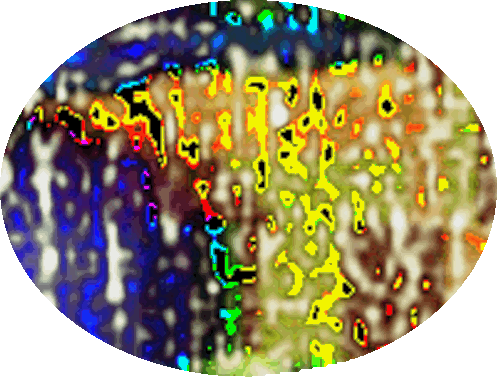
Ušumgallu Great Dragon |
- Ušumgallu ('Great Dragon'), winged golden serpent, compares with the "serpent" that tempted Eve in Eden in Genesis and the dragon vanquished by
St. George.
- Described as a lionlike dragon with four
legs and wings who also appeared as a dancing, hypnotizing,
royal cobra with a crown on his head.
- The cobra bites the
third eye of the snake charmer which results in a painful,
spiritual awakening that causes the snake charmers aura to
show a golden glow; and he can then assume the role of the
dragon to travel through the astral plane.
- Marduk is
often seen riding with Ušumgallu.
- It was one of three horned snakes in Akkadian mythology, with Bašmu and Mušmaḫḫū.
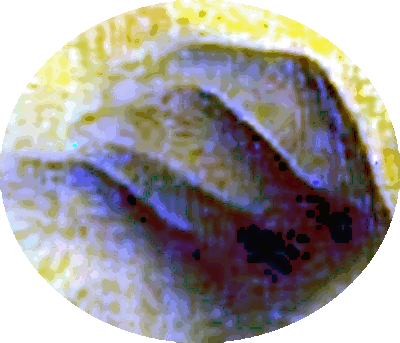
Mušmaḫḫū Exalted Serpent |
- Mušmaḫḫū ('Exalted Serpent') was
the hybrid of a serpent, lion and bird, sometimes identified with the seven-headed serpent slain by Ninurta in the mythology of the Sumerian
age.
- Known also as the Joker Bird.
-
Similar to the Greek myth of Heracles and the seven headed Lernaean Hydra he slew
in his Twelve Labors.
- His length was 160 feet
and he had a wingspan 460 feet, with sharp teeth, merciless fangs,
and instead of blood, Tiamat filled their bodies with snake venom.
- It was one of three horned snakes in Akkadian mythology, with Bašmu and
Ušumgallu.
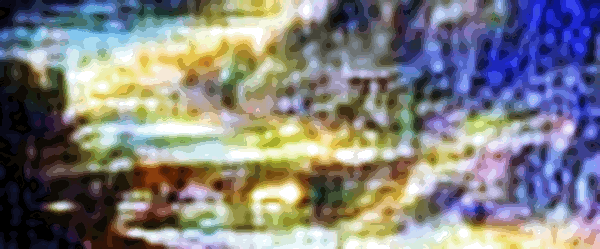
Mušḫuššu Furious Snake |
- Mušḫuššu ('Furious
Snake') is a dragon with a very thin and scaly body, with an extended neck, a long tail, lion-like arms, and an eagle’s legs.
- The furious snake was a symbol of Marduk after Marduk
defeated him in battle and made him his servant.
-
Represented on the Great Ishtar Gate as protection for the
city of Babylon.
- Like all Mesopotamian animals (monsters), he is
a symbol of protection and divine good luck.

Laḫmu the Hairy One |
- Laḫmu (the 'Hairy One')
means parent star or constellation.
- Also called Army
tank.
- He and his sister Laḫamu
were the parents of Anshar, sky father, and Kishar, earth mother, who birthed the gods of the Mesopotamian Pantheon.
- He was a bearded man with a red sash with three strands,
with four to six curls on his head that are also depicted as monsters.
- Alabaster bas-relief depicting Lahmu, one of the Assyrian protective spirits
in the South-West palace at Nineveh, Iraq.

Ugallu the Big Weather-Beast |
- Ugallu (the 'Big Weather-Beast') and storm god, was
lion headed and powerfully built and known as a storm demon.
- He had eagle's talons and wore a short skirt.
-
Babylonian's wore amulets with Ugallu as protection from
attacks.
- The cult of Ugallu held rituals at night
(because he was busy working during the day) and they knew him
as ud-demon (day demon).

Uridimmu Mad Lion |
- Uridimmu
('Mad Lion') was a chimeric creature, part man with a human
head, and part dog (or sometimes part lion).
- He was viewed as a guardian of sorts, warding off evil.
- Usually paired with the lion-headed Ugallu.
- Also called
mad howling dog.
- He was displayed on doorways to ward off evil and later became an apotropaic figurine buried in buildings for a similar purpose.
- He became with the constellation known by the Greeks as Wolf (Lupus).

Girtablullû Scorpion-Man |
- Girtablullû ('Scorpion-Man') had the head, torso, and arms of an
untamed man and the body of a scorpion.
- They have
segmented tails tipped with poisonous stingers.
- In the
Sumerian Epic of Gilgamesh, they stand guard outside the gates of the sun god Shamash at the mountains of Mashu
at the entrance to the land of darkness.
Their heads touch the sky, their "terror is
awesome" and their "glance is death".
(Wikipedia)
|
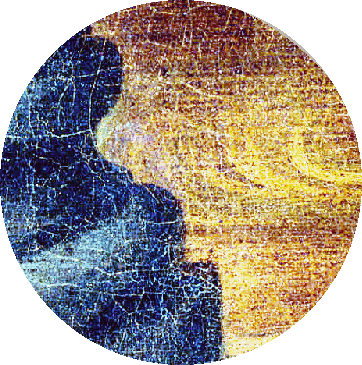
Umū dabrūtu Violent Storms |
- Umū dabrūtu ('Violent Storms') a weather
demon, also called fierce day.
- He bore cruel weapons
without fear of the fight with his companions.
- Associated
with hurricanes, tornados, raging winds, floods, earthquakes
and natural disasters.
- Used lightening bolts and thunder
as weapons.
- Sometimes appears as a swirling vortex of
energy with an eye in the center.
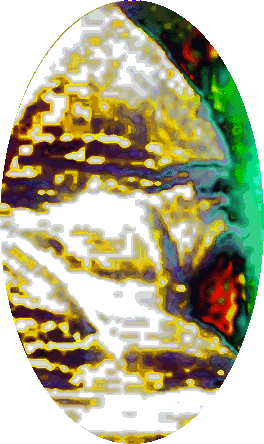
Kulullû Fish-Man |
- Kulullû
('Fish-Man') was a hybrid of a fish and man known as a merman,
and his counterpart Kuliltu, Fish-Woman, a mermaid.
- Appear often in Ancient Mesopotamian clay pots and
artwork.
- Used in Neo-Assyrian art as protective figures.
|
|
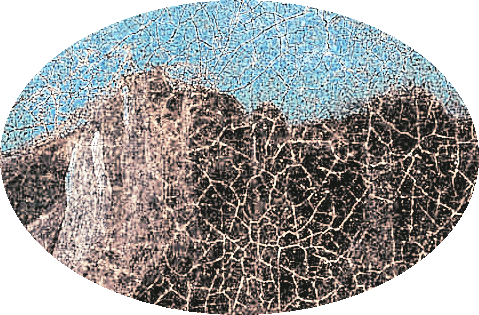
Kusarikku Bull Man |
|
- Kusarikku ('Bull-Man') was a mythological demon with the arms, torso and head of a human, and the ears, horns and hindquarters
of a bovine.
- They stand guard over underworld gates, forbidding demons from passing
through to trouble mankind.
|
|
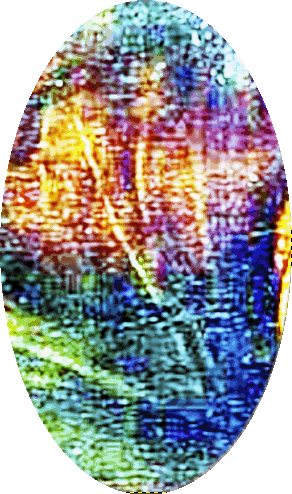
Marduk hurricane |
|
- Not long after Tiamat created the 11 weapons, the
battles began.
-
The younger gods are driven back and lose one battle after another to the older gods until Enki’s son Marduk defeats Qingu in single combat and kills Tiamat.
- Marduk eventually captured all 11 weapons and
bound them up in strong ropes.
- He fed the captured monsters the corpses of his (and Babylon’s) defeated
enemies, which helped to train and domesticate them.
- From
then on, the monsters were in his service, and over time, the
monsters became protective presences and magical creatures who could safeguard the lives
of Babylonian's.
- Tiamat's demise was the beginning of the ancient shift in
power from a matriarchal society to a patriarchy, and a
male-based culture.
The Babylonians told of a sky-god, Marduk, and a sea-goddess, Tiamat, battling for supreme power over the other gods, in the Enūma Eliš. It has been speculated these two characters in the Babylonian myth are parallel to the creation stories found in the biblical passages containing the name Rahab.
(Wikipedia)
|
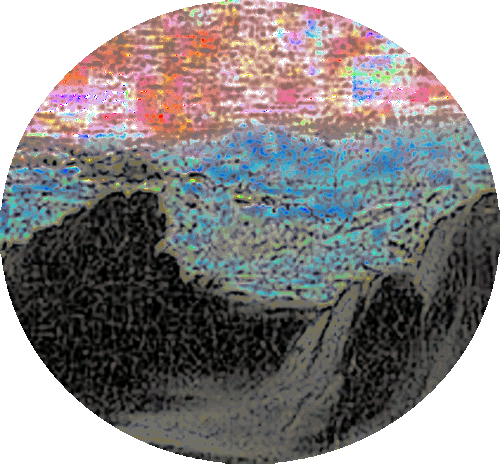
Tiamat's body is the earth and the sky |
- Marduk mixed Qingu's blood with earth and used the clay to mold the first human beings
(Enki changed the DNA).
-
He sliced Tiamat in half, and made her ribs the vault of heaven and earth.
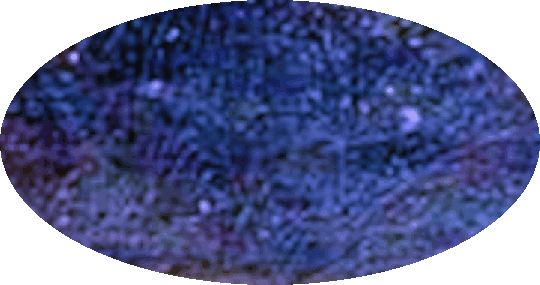
Milky Way |
- Tiamat's weeping eyes became the sources of the Tigris and the Euphrates
rivers, and her tail became the Milky Way.
- After Marduk
fashioned her body, Babylon was at
the center.
- Marduk then took the Tablet of Destinies and
was the new king of the gods in the Babylonian Pantheon.
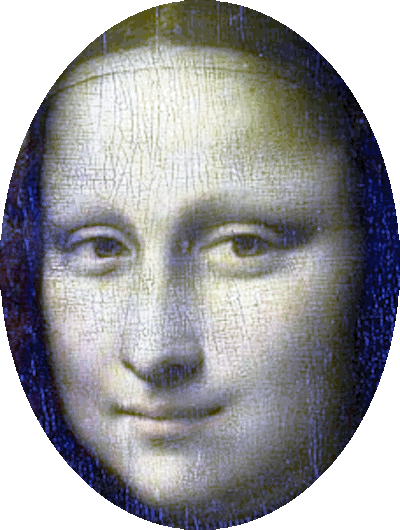
Mona crone |
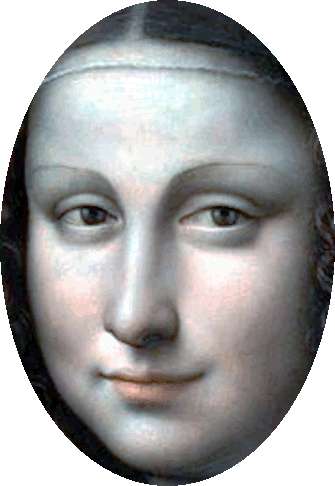
Mona mother |
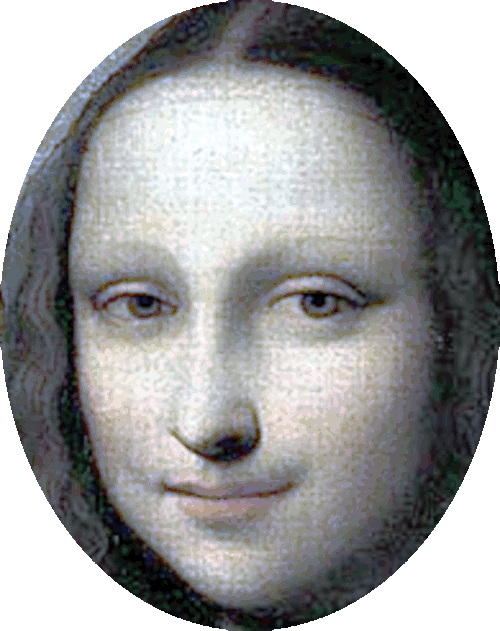
Mona naturallook |
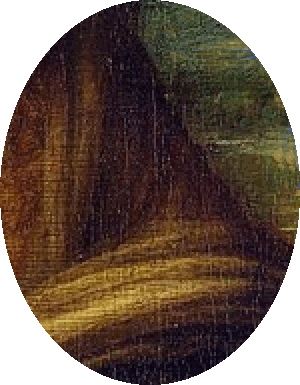
Signed by Leonardo DaVinci |
|
|

